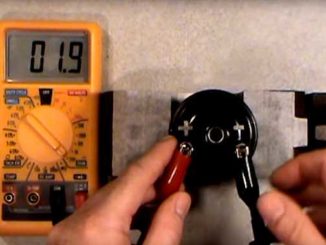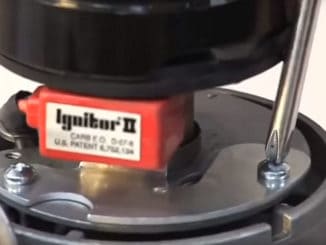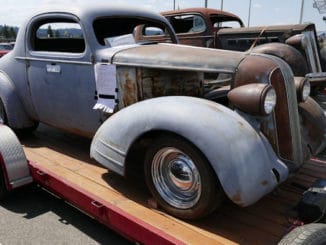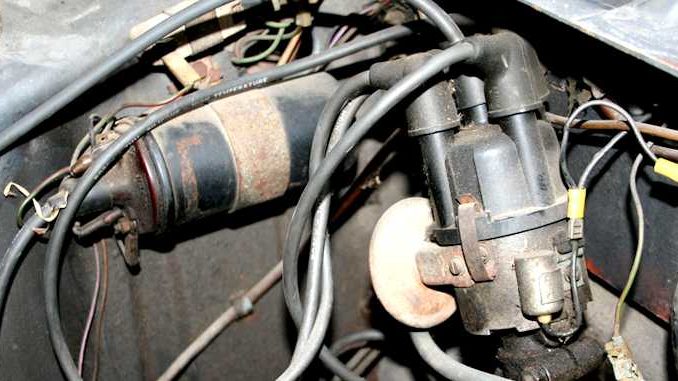
The ignition system is a key component in making an engine run because it provides a way for the fuel mixture to burn. All gasoline engines require an ignition system. Most four-stroke engines use mechanically timed electrical ignition systems. The heart of this system is the distributor which contains:
- A rotating cam that runs off the engine’s drive
- A set of breaker points
- A condenser
- A rotor
- A distributor cap
External to the distributor is the:
- Ignition coil
- Spark plugs and the wires that link the spark plugs and the ignition coil to the distributor
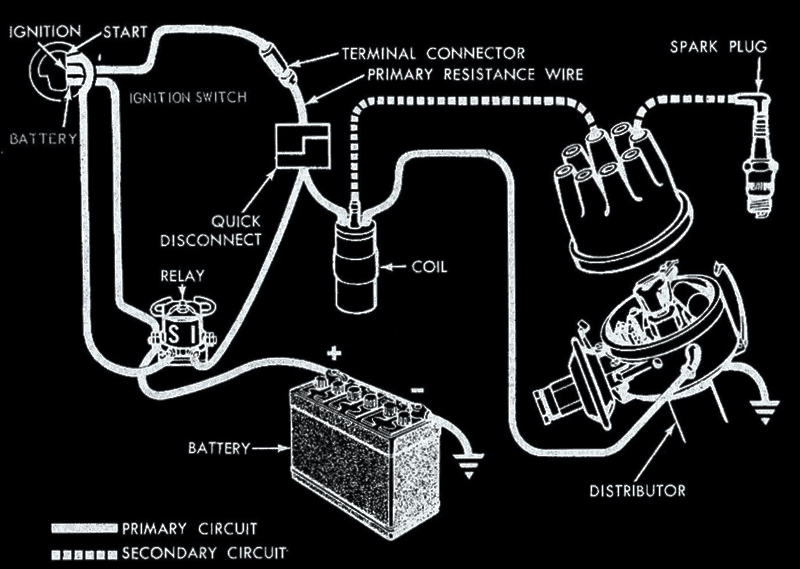
A lead-acid battery is the power source of the ignition system which is kept charged by generating electricity using an alternator. The engine operates contact breaker points, which interrupt the current flow to the ignition coil.
The ignition coil consists of a primary and secondary winding that share a common magnetic core. For an ignition coil, Both windings are connected together at one end. This point is connected to the battery, the other end of the primary is connected to the points within the distributor. The other end of the secondary is connected, via the distributor cap and rotor, to the spark plugs.
The sequence of the ignition firing begins with the points (or the contact breaker) closed. A current will flow from the battery, through the current limiting resistor, then through the coil primary and across the closed breaker points, and then finally back to the battery. This current produces a magnetic field within the coil’s core that forms an energy reservoir. That energy will drive the ignition spark.
As the engine turns, so does the cam inside the distributor. The points will ride on the cam so that as the engine turns and reaches the top of the engine’s compression cycle, a high point in the cam will cause the breaker points to open. This will break the primary winding’s circuit and will stop the current flow through the breaker points. When there is no current flow, the magnetic field generated in the coil will immediately begin to collapse. This rapid decay of the magnetic field induces a high voltage in the coil’s secondary windings.
The coil’s windings are connected to the distributor cap. A turning rotor that is located on top of the breaker cam within the distributor cap, connects the coil’s windings to one of several wires that lead to each spark plug. The, often over 1000 volts from the coil’s secondary will cause a spark to form across the gap of the spark plug. This will then ignite the compressed air-fuel mixture in the engine.


